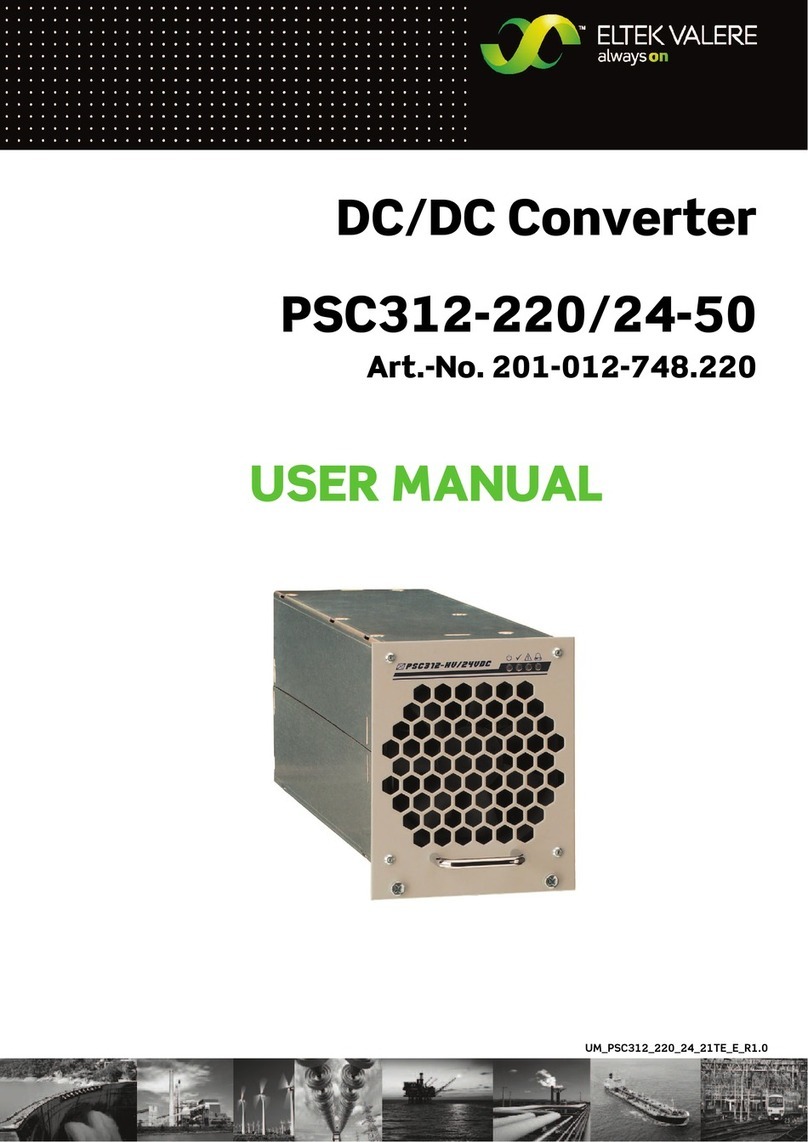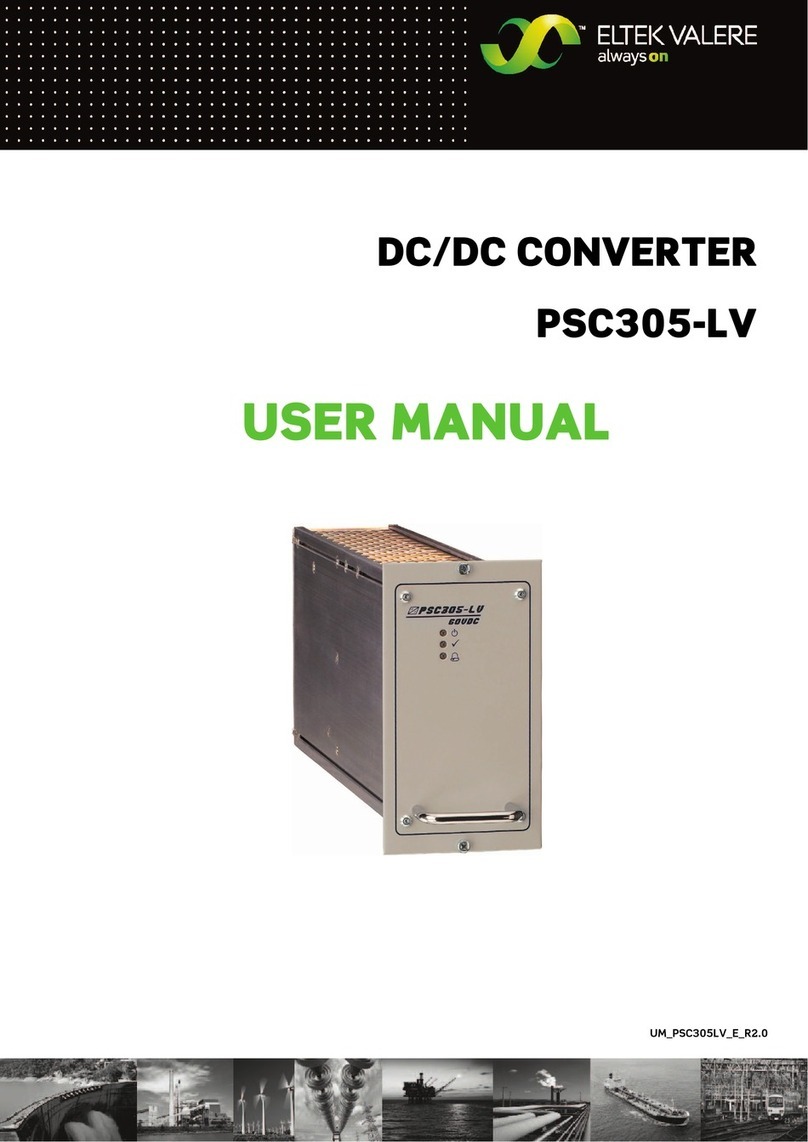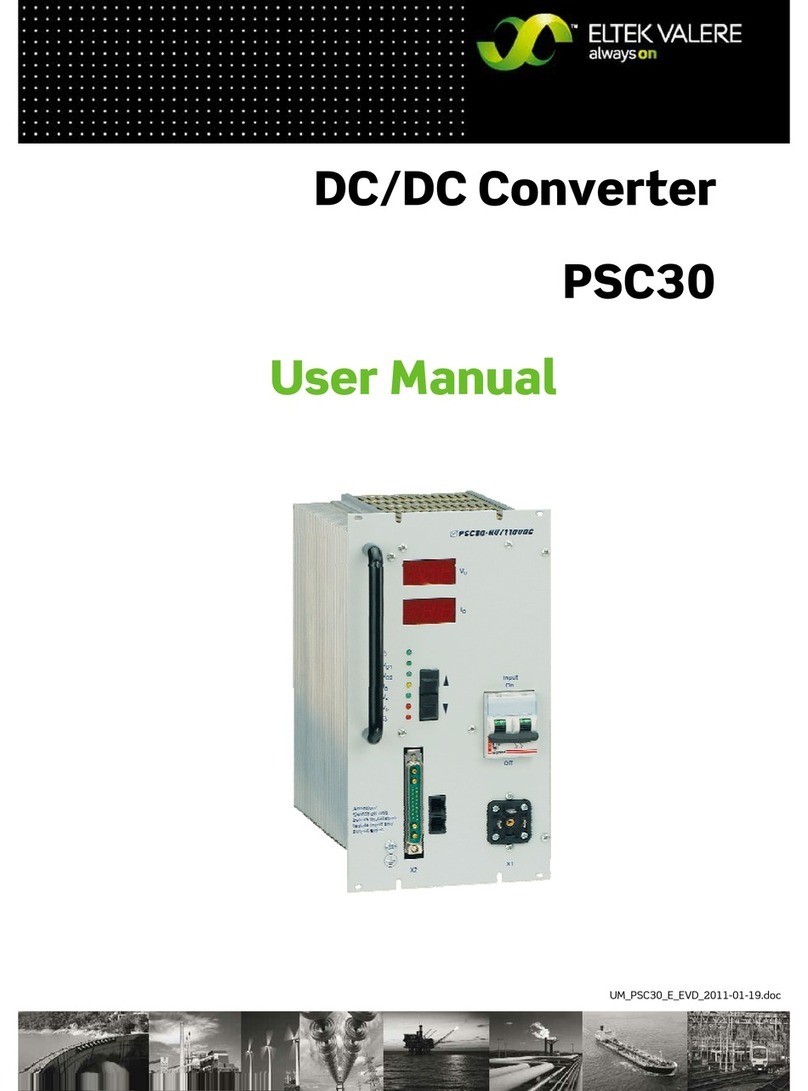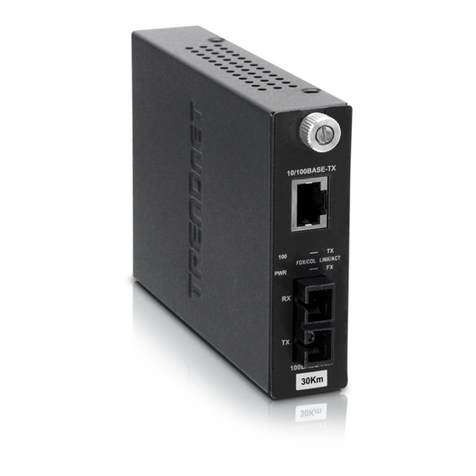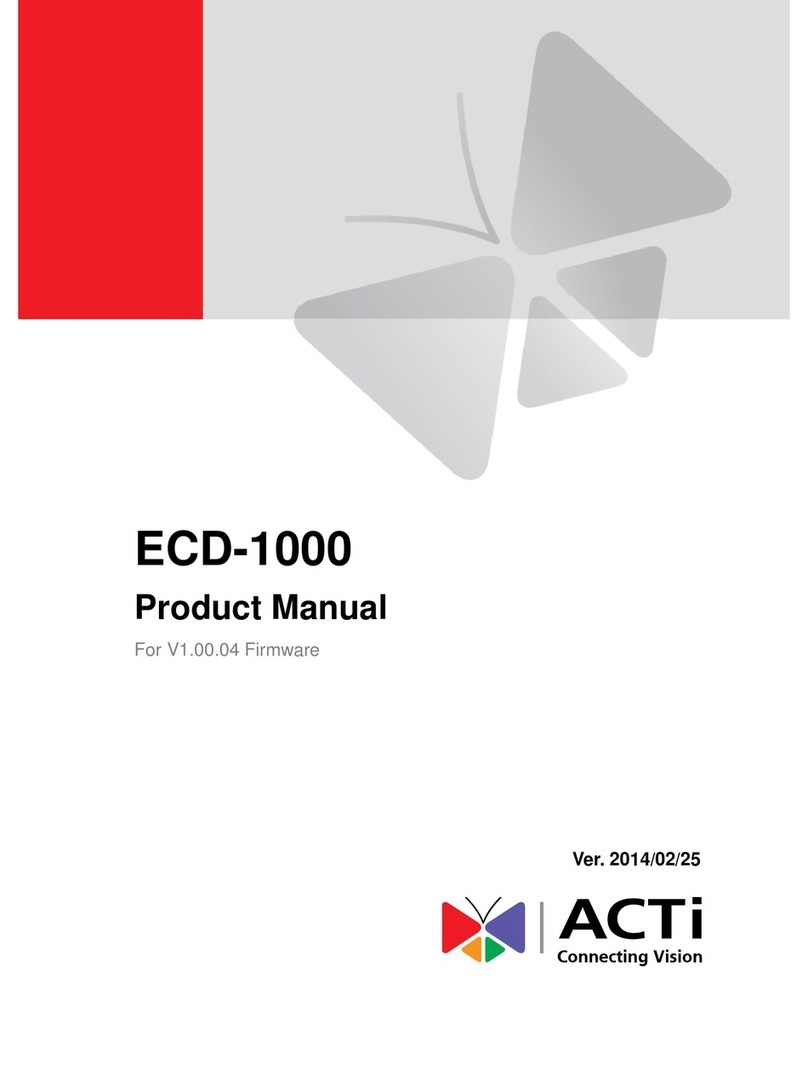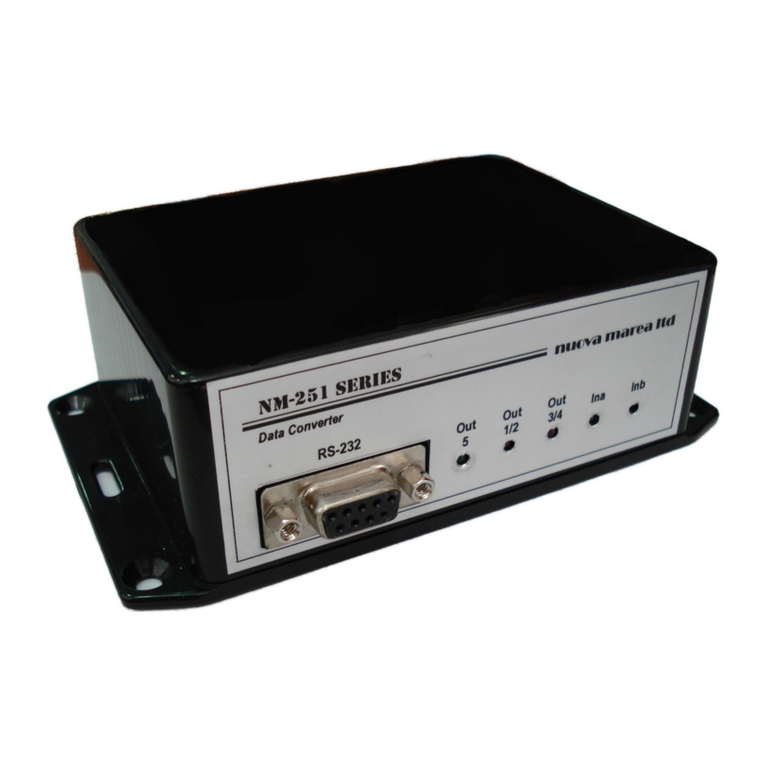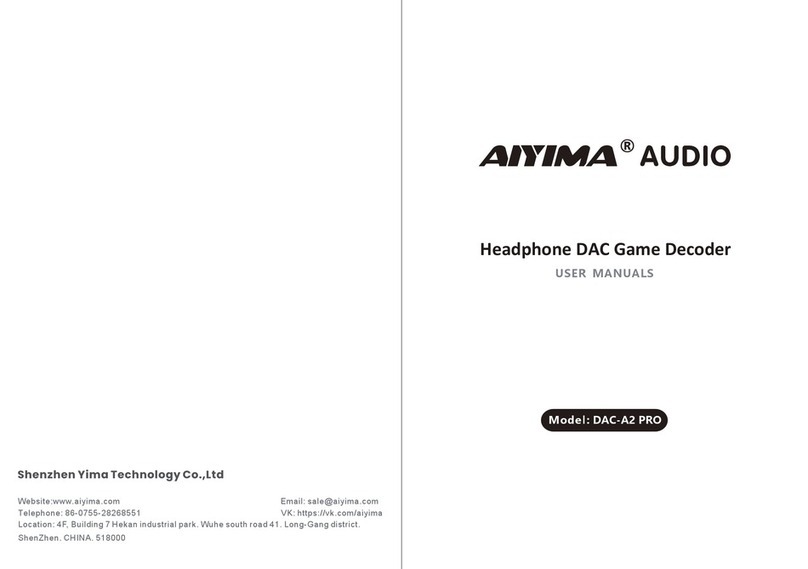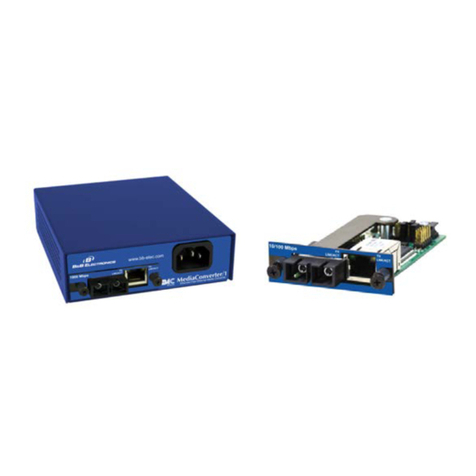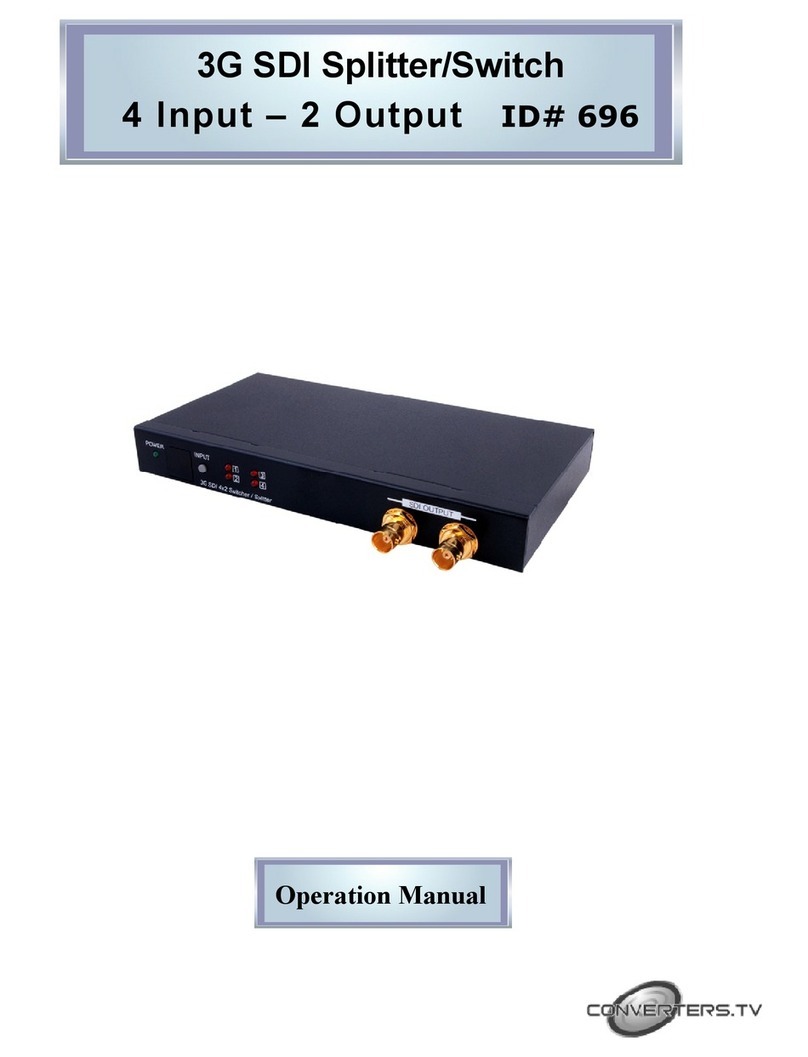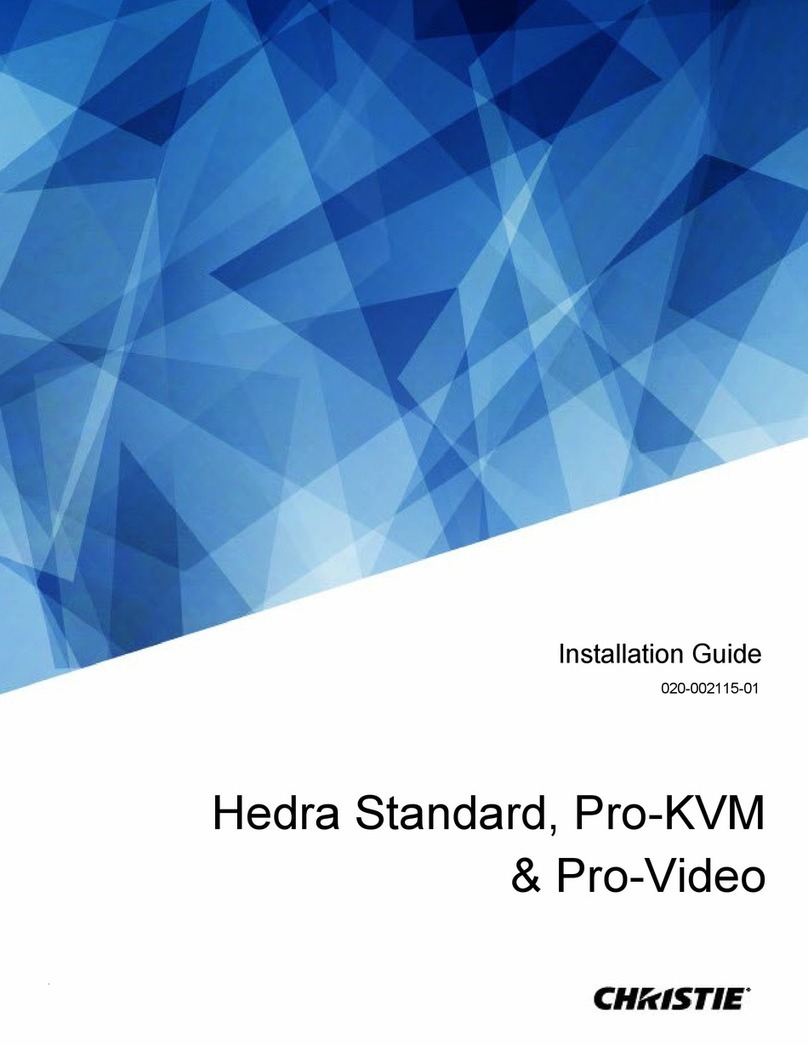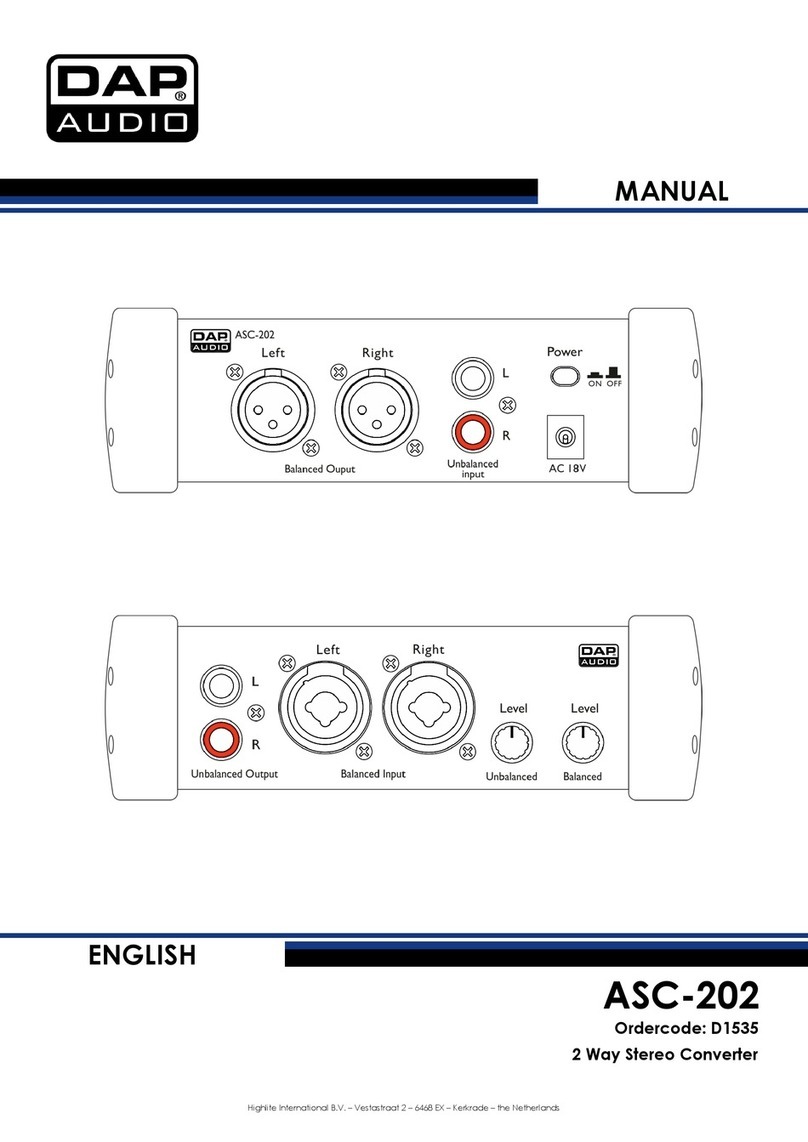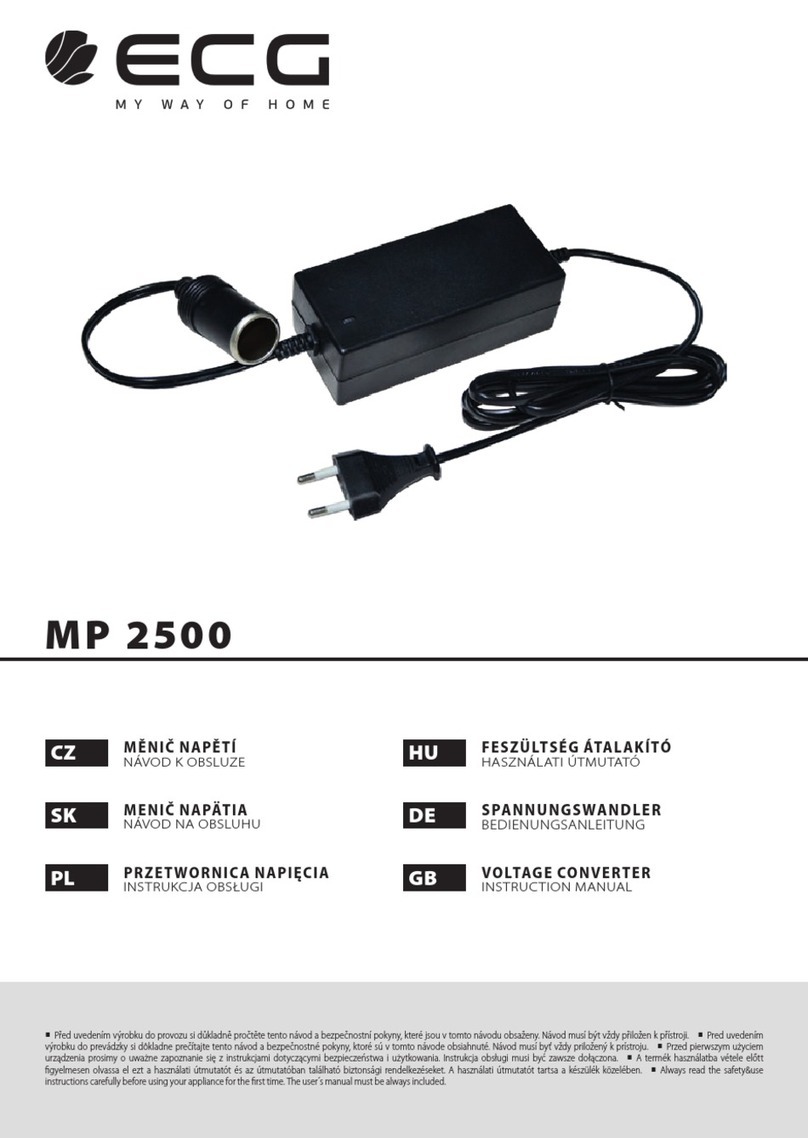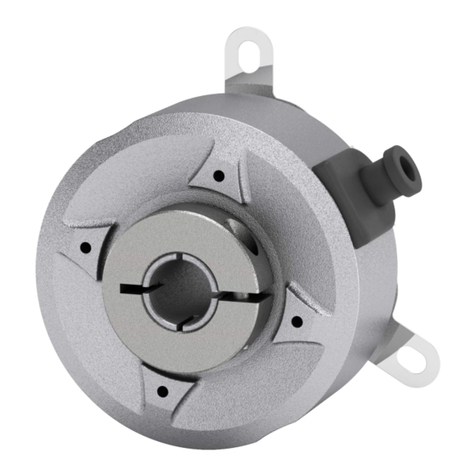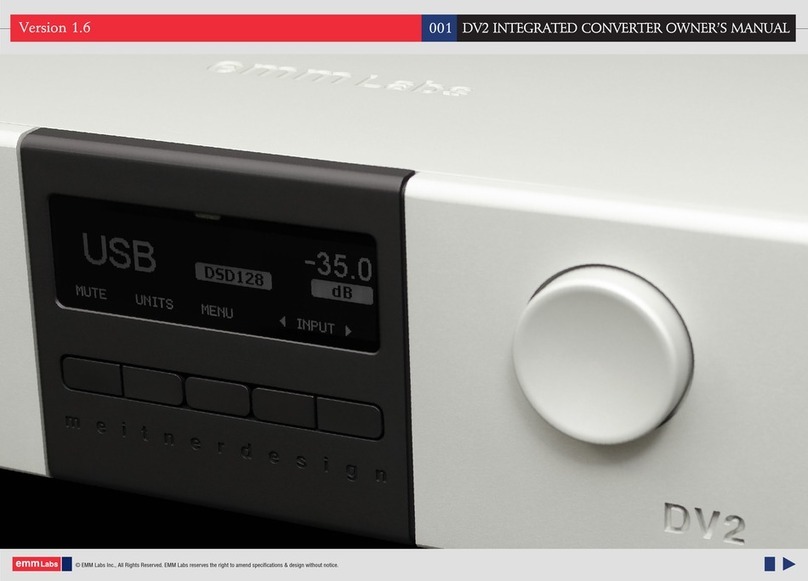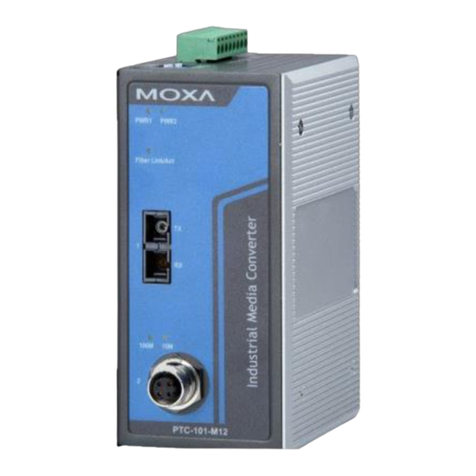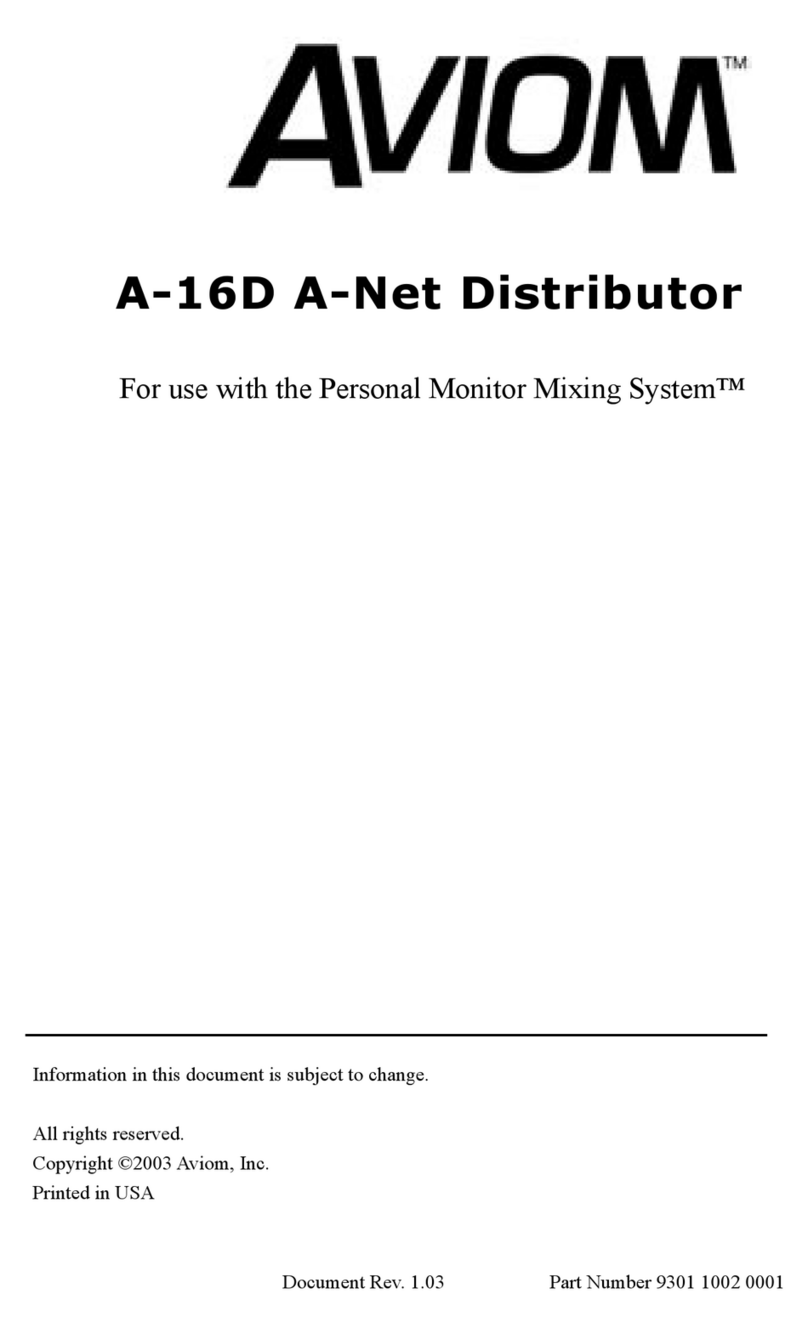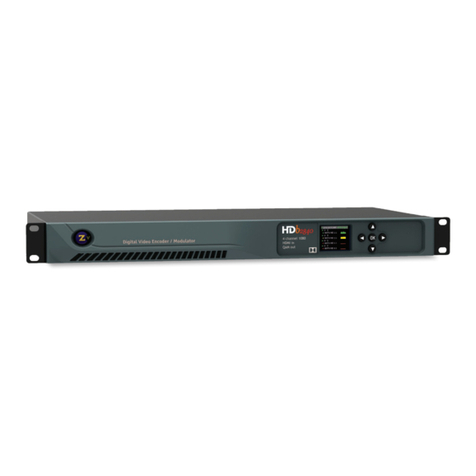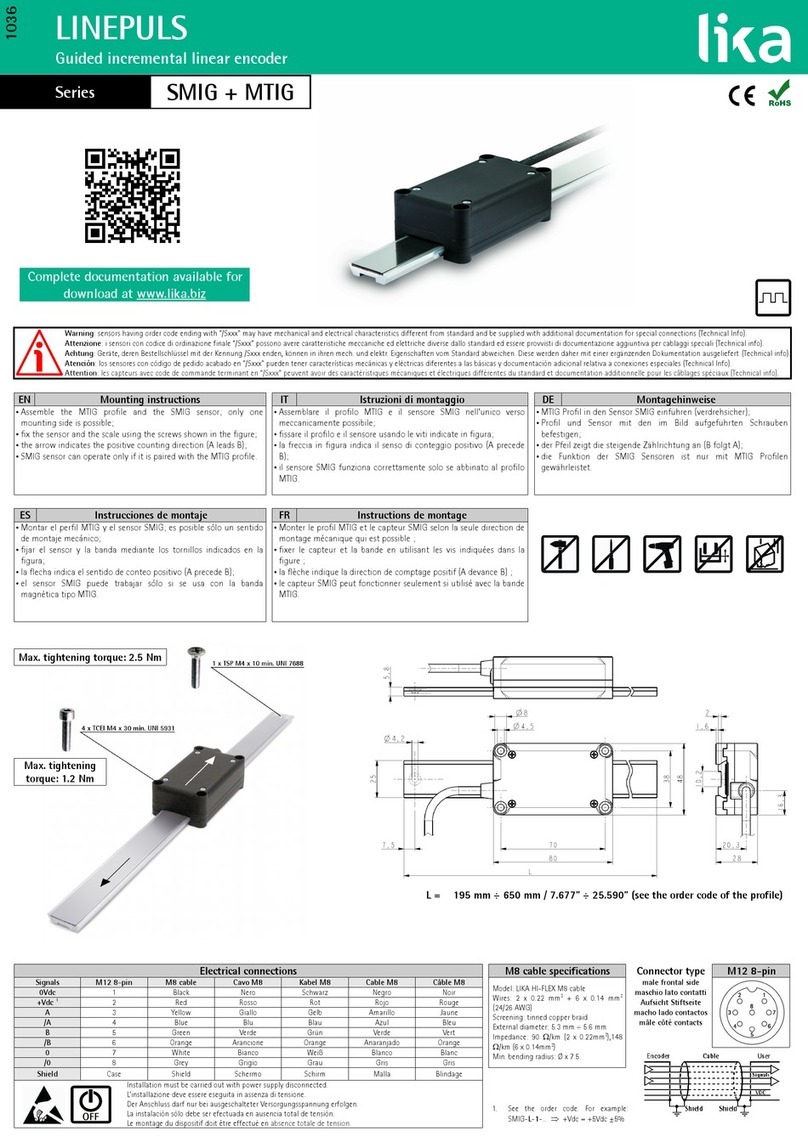Eltek Valere PSC18 User manual

DC/DC CONVERTER
PSC18
USER MANUAL
BHB.PSC-18.D30-1020.HB101

DC/DC Converter
PSC18
User Manual
Page 2 ( 22 )
Eltek Valere Industrial GmbH 2007 BHB.PSC-18.D30-1020.DB101
General information
IMPORTANT! Please read this operation and maintenance manual carefully before assembling and start up the unit!
The operation and maintenance manual is part of this unit, i.e. it should be made available to each and every person
concerned with the start up, maintenance or operation of the unit. The unit should be moved, mounted, started,
operated and maintained only by skilled personnel. The local specifications for the prevention of accidents as well
as the general guidelines according to IEC 364 should always be followed!
The functional description in the operation and maintenance manual correspond to those at the time of the publi-
cation. Technical design modifications or those of power ratings can be carried out by the supplier without an-
nouncing any revision or announcement. There is no responsibility for the constant revision of the operation and
maintenance manual
The module is manufactured in accordance with applicable DIN and VDE standards such as VDE 0106 (part 100) and
VDE 0100 (part 410). The CE marking on the module confirms compliance with EU standards 2006-95-EG (low volt-
age) and 2004-108-EG (electromagnetic compatibility) if the installation and operation instructions are followed.
The units are delivered according to our delivery conditions. Rights to alterations in the technical details in this
operation and maintenance manual as well as in the respective data sheets are reserved.
Claims about faulty goods have to be made as soon as possible after receipt of material. Packing note and invoice
as well as the information about the type, serial number and damage description have to be transmitted to the
supplier.
Warranty claims not be accepted in case of visible external influences (e.g. missing or loose screws, welding, loose
sheets, etc.), which could be attributed to an unauthorised opening of the unit. The supplier is not responsible for
applications of the unit, not intended by the manufacturer. The end user is responsible to take the necessary ac-
tion for the prevention of damage to personnel and material (see the upper text section).
Supplier
ELTEK VALERE INDUSTRIAL GmbH
Schillerstraße 16
D-32052 Herford
+ 49 (0) 5221 1708-210
FAX + 49 (0) 5221 1708-222
Internet http://www.eltekvalere-industrial.com
IMPORTANT!
Repetition, copying and /or taking possession of this operation and maintenance manual, even in ex-
tracts, with electronic or mechanical means, requires the written, prior permission of the SUPPLIER.
Copyright ELTEK VALERE INDUSTRIAL 2007. All rights reserved.

DC/DC Converter
PSC18
User Manual
Page 3 ( 22 )
Eltek Valere Industrial GmbH 2007 BHB.PSC-18.D30-1020.DB101
Table of Contents
1. GENERAL INFORMATION ...................................................................................................................................... 4
2. TYPE RANGE....................................................................................................................................................... 4
3. START UP PROCEDURE........................................................................................................................................ 4
4. OPERATION ........................................................................................................................................................ 5
5. FUNCTIONS......................................................................................................................................................... 6
5.1 Circuit diagram..................................................................................................................................... 6
5.2 Electrical function description......................................................................................................... 7
5.2.1 Electrical insulation....................................................................................................................................... 7
5.2.2 Input.................................................................................................................................................................. 8
5.2.3 Output .............................................................................................................................................................. 8
5.2.4 Output voltage dynamic behaviour........................................................................................................... 8
5.2.5 RFI suppression .............................................................................................................................................. 8
5.2.6 Parallel operation mode ............................................................................................................................... 8
5.3 Monitoring ............................................................................................................................................. 9
5.3.1 Mains Voltage Monitoring............................................................................................................................ 9
5.3.2 Operation Monitoring.................................................................................................................................... 9
5.3.3 Output Voltage Low...................................................................................................................................... 9
5.3.4 Output Voltage High...................................................................................................................................... 9
5.3.5 Protection Against Overheating ................................................................................................................ 9
5.3.6 Signals .............................................................................................................................................................. 9
5.4 Output and threshold adjustment................................................................................................10
6. EXTERNAL FUNCTIONS .....................................................................................................................................10
6.1 Output voltage sensor leads .........................................................................................................10
6.2 Temperature Compensation of Charging voltage....................................................................11
6.3 External Switch ON/OFF..................................................................................................................11
6.4 Discharge Test...................................................................................................................................11
6.5 Boost Charge Mode ..........................................................................................................................11
7. OPERATION ELEMENTS AND CONNECTORS ......................................................................................................12
7.1 Front View / Operation Elements .................................................................................................12
7.2 Front View / Operation Elements .................................................................................................12
7.3 Indication Instruments.....................................................................................................................13
7.4 Electrical Connectors of Input and Output.................................................................................13
8. MAINTENANCE .................................................................................................................................................15
9. FAULT FINDING INSTRUCTIONS...........................................................................................................................16
9.1 No Output Voltage............................................................................................................................16
9.2 Deviation of Output Voltage ..........................................................................................................16
10. TECHNICAL DATA.............................................................................................................................................17
10.1 General Technical Data ...................................................................................................................17
10.2 Type Specific Data............................................................................................................................20
11. DIMENSIONS /FRONT VIEW.............................................................................................................................21
11.1 Dimensions / Front View - PSC18 (24, 48, 60 and 110V Version) ........................................21
11.2 Dimensions / Front View - PSC18 (220V Version) ....................................................................22

DC/DC Converter
PSC18
User Manual
Page 4 ( 22 )
Eltek Valere Industrial GmbH 2007 BHB.PSC-18.D30-1020.DB101
1. General Information
The Switch Mode Power Supply units PSC18 (named SMPS in the following) supply an output power of 1500W (max.
1800W).
A typical application is a mains-connected secured DC-power supply source feeding the connected battery as well
as the consumer load. Hereby, the dynamic regulating performances are particularly advantageous during input
voltage and consumer load deviations.
The SMPS unit operates to an IV-characteristic according to DIN 41772/41773 and represents a complete unit for
implementation in a 19” assembly carrier according to DIN 41494. The operation and indication elements as well as
the plugs are located on the front plate of the unit.
2. Type range
PSC18
Type designation
Article code Input-voltage
in V DC
Output-
voltage
in V DC
Output-current
in A DC
110/24-40 200-018-740.00 110 24 40
110/48-30 200-018-750.00 110 48 30
110/60-25 200-018-760.00 110 60 25
110/110-13.4 200-018-770.00 110 110 13.4
110/220-6.7 200-018-780.00 110 220 6.7
110/220-6.7 Relay 200-018-780.01 110 220 6.7
220/24-40 200-018-840.00 220 24 40
220/48-30 200-018-850.00 220 48 30
220/60-25 200-018-860.00 220 60 25
220/110-13.4 200-018-870.00 220 110 13.4
220/220-6.7 200-018-880.00 220 220 6.7
Available options and accessories:
Temperature sensor lead LM 335 (sensor lead in M5 cable shoes with 2m
wire)
CAN-Bus-interface
One set input and output plug:
24 – 110V DC
220V DC
3. Start up procedure
Before connecting to the input voltage, it should be checked whether the voltage information on the rating plate
corresponds to the available voltage and also that the polarity corresponds to the connection plan of the plug. The
mains connection is done via a unit plug at the front side. The protective conductor should be generally connected
(protection class 1, leakage current 3.5 mA).

DC/DC Converter
PSC18
User Manual
Page 5 ( 22 )
Eltek Valere Industrial GmbH 2007 BHB.PSC-18.D30-1020.DB101
Important:
If a pole of the output side has been earthed, then the SMPS unit should be grounded via the separate PE connec-
tion on the front plate at the left side near the DC- output connection.
In this case, the protective conductor at the input side should not be connected via the input plug (earth circuit).
This is particularly important for parallel connection without external decoupling diodes.
The DC-output connection is done via a SUB-MIN-D-plug of design 21 WA4 on the front side. The output plug also
contains the connections for the signals, sensor cable connections, symmetry regulation and temperature sensor
lead.
Note:
The SMPS is equipped with a high capacitive capacitor connected in the output. If the SMPS output in the dead
state is connected “hard” to a battery or other parallel operating SMPS, then it results in a considerable surge of
charging current, which could lead in welding the plug contacts when the plug is inserted.
This can be avoided by the following proceedings:
Switch on the SMPS before mounting without the output plug; insert the
connection plug only after the adjusted output voltage is attained.
Disconnecting the DC- circuit with a switch or a fuse
Charging with a protective resistance (approx. 1 Ohm/V)
Use of decoupling diodes
After switching off the unit, the capacitors in the input and output circuits can still conduct voltage; the discharge
time of the input circuit is approx. four seconds, that of the output circuit is approx. 15 seconds.
The SMPS unit operates with natural air cooling. The temperature of the inflow air should not exceed 45oC. If sev-
eral units are operated via one another in the cabinet, then either forced cooling should be provided or a vertical
distance of at least 134 mm = 3 HU should be maintained between the units. Air flaps should be mounted between
the mounting levels such that the temperature of the inflow air of the individual mounting levels does not exceed
the permissible operation temperature. Cabinet rooms should be designed for a max. ambient temperature of
40oC. Temperatures upto 60oC are permitted for a short time or in the case of forced cooling in the cabinet, but
should be avoided in the interest of the lifetime of the unit.
The power loss per unit is approx. 150 W to 170 W (depending on the type).
4. Operation
The unit is operated using the operating elements arranged on the front plate. The operating elements are de-
scribed in the respective sections and are assigned by the labels on the front plate of the unit (see Pt. 7.1/7.2).

DC/DC Converter
PSC18
User Manual
Page 6 ( 22 )
Eltek Valere Industrial GmbH 2007 BHB.PSC-18.D30-1020.DB101
5. Functions
5.1 Circuit diagram
Fig. 1:
Circuit diagram
PSC18

DC/DC Converter
PSC18
User Manual
Page 7 ( 22 )
Eltek Valere Industrial GmbH 2007 BHB.PSC-18.D30-1020.DB101
5.2 Electrical function description
The SMPS unit consists of the following main functional components:
1. Input filter suppressing the feedback of high frequency interference pro-
duced by the unit into the mains as well as for the attenuation of the inter-
ference voltages and voltage transients superimposed on the mains.
2. Rectifier (polar protection) with synchronised power controller (operating
frequency 100 kHz) for converting the input voltage into a pre-regulated DC-
voltage of approx. 380V (DC – Input 110V DC: 170V ), regulating the input
voltage curve and restricting the inrush current.
3. Transistor bridge circuit for converting the 380 (170)V DC into a pulse-width
regulated stepped voltage with a frequency of 100 kHz.
4. Power transmitter to the potential separation and voltage adaptation at the
secondary side
5. Rectifier with fast switching diodes
6. LC filter for smoothing the DC- voltage ripple at the rectifier output
7. Output filter for smoothing the interfering voltages on the output voltage
8. Auxiliary current supply for the internal power supply to the control compo-
nents with potential separation at the primary and secondary side.
9. Regulating line with potential separation by optocoupler.
10. Operating component with parameter adjustments, signalling, monitoring
and indication elements
5.2.1 Electrical insulation
Due to the design of the unit and of the components as well as design of separated connections of the input and
output circuits
the SMPS series with UA60 V DC fulfil the EN 60950 and VDE 0100 Stan-
dard; i.e. protection against shock currents due to the functional extra low
voltage with a safe electrical insulation.
the SMPS series UA> 60 V DC satisfy the safe electrical insulation up to UA=
220 V DC according to EN 60950 and VDE 0160 Standard.

DC/DC Converter
PSC18
User Manual
Page 8 ( 22 )
Eltek Valere Industrial GmbH 2007 BHB.PSC-18.D30-1020.DB101
5.2.2 Input
The input is protected by a 2-pole circuit breaker. This circuit breaker is used also as on/off-switch.
The MCB is situated before the input filter. The SMPS has a current limitation which limits the inrush current to the
level of nominal input current.
5.2.3 Output
The output-characteristic is an IV-characteristic according to DIN 41772 or DIN 41773. An active current distribu-
tion or a characteristic curve (- 1% for 100 % Inom can be selected for parallel operation (factory adjustment: char-
acteristic curve)
The output is continuously short circuit proof due to a constant current regulation.
5.2.4 Output voltage dynamic behaviour
In case of load changes in the load between 10% and 90% Inom or 90% and 10% Inom the dynamic voltage deviation is
max. 3% and is compensated to the static limits within max. 1.5 ms.
5.2.5 RFI suppression
The SMPS unit fulfils the conditions of the RFI class “ B “ according to VDE 0878 T 1 or EN 5501 /55022. When
measured with a filter according to CCITT-recommendations, the output ripple is psophometric < 1 mV (24V), < 1.8
mV (48V) as well as < 2 mV (60V).
5.2.6 Parallel operation mode
Due to the parallel operation ability of the SMPS it is possible to design the redundant cabinets according to the
principle n+1.
Due to the 1% characteristic curve (factory adjustment) a load distribution of about 10% and due to the optional
active current distribution (see pt. 7.3, factory adjustment necessary), about 5% is attained.
During the adjustment of the characteristic curve, the load distribution can be optimised by increasing the output
voltage in the unit having the smallest load current and decreasing the output voltage in the unit having the larg-
est load current (see pt. 5.4).
The selective monitoring of the individual SMPS is possible only with internal or external decoupling diodes in the
output.
The delivery of units with an output voltage 60 V DC with already incorporated internal decoupling diodes is op-
tional. The units are labelled with p (internal decoupling diode in the plus branch) or m (internal decoupling diode in
the minus branch).

DC/DC Converter
PSC18
User Manual
Page 9 ( 22 )
Eltek Valere Industrial GmbH 2007 BHB.PSC-18.D30-1020.DB101
5.3 Monitoring
5.3.1 Mains Voltage Monitoring
Mains voltage monitoring; signaling with LED "Mains", criterion: output voltage of step-up-converter 370 V (165V),
at the same time operation monitoring of step-up-converter (equivalent to main voltage of appr. 195 (100)VAC;
depends on load).
The LED is dark if mains voltage low or the step-up-converter is out of order.
This signal is included in collective failure signal. Additional there is an optocouppler signal (mains O.K.)
5.3.2 Operation Monitoring
Functional monitoring; signaling with LED "UA1", criterion: output voltage 97 % of adjusted output voltage without
constant current regulation and 85 % of the adjusted output voltage with constant current regulation. The sig-
naling threshold of this monitoring follows the adjusted nominal output voltage automaticly.
This signal is included in collective failure signal of rectifier. Additional there is an optocouppler signal (UAO.K.)
At operation with internal decoupling diodes the voltage before diodes will be measured.
5.3.3 Output Voltage Low
Output voltage low monitoring; signaling with LED "U<", criterion: output voltage is higher than adjusted level U<;
This signal is included in collective failure signal. It has its own relay contact on signaling connector too. If the volt-
age value is O.K. Pin 13 and Pin 17 of X2 or Pin 11 and Pin 15 of X4 (220V – output voltage)are closed.
5.3.4 Output Voltage High
Output voltage high monitoring; signaling with red LED "U>", criterion: output voltage higher than adjusted level U>;
This signal is included in collective failure signal of SMPS. If there is an error the LED burnes and the SMPS switches
off internal. This protective unit has an automatic locking and should be set back with the mains switch or remote
ON/OFF.
5.3.5 Protection Against Overheating
Protection against overheating; signaling with red LED "Alarm", criterion: temperature of heat sink > 90°C.
The over-temperature protection switches OFF the SMPS when the limited temperature is attained.
This signal is included in collective failure signal. You have to reset the unit by ON/OFF switch.
5.3.6 Signals
The signals "UAO.K.", "Mains O.K." and "Constant Current Mode Iconst" are optocouppler signals with a loading of 30
V/5 mA. The optocoupplers switches off at error. The collective failure signal is delayed for appr. 10 sec. The relay
contacts between Pin 14 and Pin 15 of X2 and Pin 12 to Pin 14 of X4 (220V – Output voltage) are open and be-
tween Pin 15 and Pin 16 are closed at error.

DC/DC Converter
PSC18
User Manual
Page 10 ( 22 )
Eltek Valere Industrial GmbH 2007 BHB.PSC-18.D30-1020.DB101
5.4 Output and threshold adjustment
The adjustment of output values and monitoring thresholds are very easy. All values will be adjusted with front
keys by showing the actual value in the front side digital displays.
In normal operation the top display shows the output voltage (UA1/UA2/UA3) and the bottom display shows the out-
put current (IA).
For any adjustment please follow these instructions:
press both keys UP/DOWN() together for a short time; the SMPS
changes to adjustment mode
press the key UP() or DOWN() to change the adjustment parameter
(see also table on bottom)
press both keys UP/DOWN() together for a short time; the SMPS
changes to value change mode
press the key UP() or DOWN() to change the adjustment value (if you
hold the key the value changes quicker)
press both keys UP/DOWN() together for a short time; the SMPS
changes back to adjustment mode (at this moment the changed value
will be storaged)
press both keys UP/DOWN() for appr. 3 sec. to change back in opera-
tion mode
Adjustable parameters in adjustment mode:
Display Parameter
Uo1 (=UA1) tripple charge voltage
Uo2 (=UA2) boost charge voltage (look also cap. 6.5)
Uo3 (=UA3) voltage at discharge test (look also cap. 6.4)
Io (=IA) output current
U< output voltage low threshold (look also cap. 5.3.3)
U> output voltage high threshold (look also cap.
5.3.4)
t coefficient of temperature for temperature
compensation of charge voltage (look also cap.
6.2)
The monitoring thresholds follow automaticly the adjusted nominal values of output voltage. The monitoring
thresholds for mains/step-up-converter and over heating are not changeable.
The adjustment ranges for several thresholds you can find in technical specifications.
6. External Functions
6.1 Output voltage sensor leads
With sense links for output voltage you can compensate voltage losses over wires or diodes.
The max. regulation difference is approx. 4 % of the nominal voltage.
Interruption on sense links, confusing of poles or short circuit can`t damage the rectifier. At interrupt it can be a
voltage increase of max. 4%.

DC/DC Converter
PSC18
User Manual
Page 11 ( 22 )
Eltek Valere Industrial GmbH 2007 BHB.PSC-18.D30-1020.DB101
6.2 Temperature Compensation of Charging voltage
At using of closed batteries we recommend the temperature controlled compensation of charge voltage. You has
to connect a external active temperature sensor (option) on signaling connector. The coefficient of temperature
normally is -4 mV/K per cell (in temperature range of 0-50 °C). The basic temperature is 20°C. The coefficient can
be adjusted between -1 to -6mV/K per cell (look cap. 5.4).
The sensor will be connected with a 2pole wire (0.25 mm2). It can be mounted directly on top of battery or on bat-
tery poles. At big distances (from 2m) we recommend a shielded wire with connection of the shield on SMPS
ground.
6.3 External Switch ON/OFF
The SMPS can be switched on/off with an external signal. The input is free of potential by an optocouppler and
fulfills the suppostion for safe electrical decoupling to mains and output side. The signaling voltage is 10-24 V, the
internal resistance 2.7 kOhm. The input is protected against confusing the poles. At higher supply voltages the
current in the control circuit has to be limited to 5-7mA with a resistor (for instance 6.8 kOhm at 48/60V DC).
6.4 Discharge Test
The discharge test voltage can be adjusted by the user
(parameter UA3; see cap. 5.4). If the discharge test mode active the LED UA1 is on.
6.5 Boost Charge Mode
The SMPS module has a second charge line (boost charge line). To select this mode, a voltage is to be to connected
to pin 2 of the output connector X2 (look cap. 7.3). The boost charge mode will be signalized with LED UA2. The
user is able to adjust the voltage value (see cap. 5.4).

DC/DC Converter
PSC18
User Manual
Page 12 ( 22 )
Eltek Valere Industrial GmbH 2007 BHB.PSC-18.D30-1020.DB101
7. Operation Elements and Connectors
7.1 Front View / Operation Elements
24/48/60/110 V-Version
X2
X1
Netz
Mains
U
A1
U
A2
I
A
U<
U>
Alarm
U
A
I
A
A1
A2
A3
A4
1
9
10
17
Digital displays
LED signals
Up / Down
Input fuse - ON / OFF switch
DC - Input con. X1
Ground
DC - Output con. X2 / signals
7.2 Front View / Operation Elements
220 V-Version
X2
X1
Netz
Mains
U
A1
U
A2
I
A
U<
U>
Alarm
U
A
I
A
X4
11
815
Digital displays
LED signals
Input fuse - ON / OFF switch
DC - Input con. X1
Ground
DC - Output con. X2
Signals X4
Up / Down

DC/DC Converter
PSC18
User Manual
Page 13 ( 22 )
Eltek Valere Industrial GmbH 2007 BHB.PSC-18.D30-1020.DB101
1
PE
2
17
A4
A3
9
10
A2
A1
1
7.3 Indication Instruments
The PSC has digital instruments from 0-999 for current and voltage. The accuracy is equivalent to class1 in rela-
tion to nominal output voltage. The displays can be switched over to showing the adjustment values of monitoring
thresholds. In this mode the parameter short name is shown in the top display and its value (UA1, UA2, UA3, IA, U<,
U>) in the bottom display.
7.4 Electrical Connectors of Input and Output
X1: DC-mains input / GDM-connector
X1, Pin Function
1 + DC - Input
2 - DC - Input
PE PE
X2: 24, 48, 60 and 110V- version
DC output and signaling contacts / SUB-MIN-D-connector 21WA4
X2, Pin Function
A1 (+) - output
A2 (+) - output (additional for IA40 A)
A3 (-) - output (additional for IA40 A)
A4 (-) - output
1 (+) - output voltage sense link
2 signal input discharge test mode / boost charge mode 1)
3 optocouppler emitter
4 optocouppler collector "Mains O.K."
5 optocouppler collector "UAO.K."
6 optocouppler collector "IA"
7 temperatur sensor (+) 2)
8 control wire for active current sharing 3)
9 (-) - output voltage sense link
10 analog ground (for temperature sensor (-), active current
sharing)
11 (+) external switch ON/OFF 4)
12 (-) external switch ON/OFF
13 relay contact U< , N/O 5)
14 relay contact collective failure , N/O
15 relay contact collective failure , COM
16 relay contact collective failure , N/C
17 relay contact U< , COM
1)
tri-state-input, pin 2 on -UA= discharge test mode,
pin 2 on +UA= boost charge mode
Note:
At 60/110V units there has to connect an additional resistor

DC/DC Converter
PSC18
User Manual
Page 14 ( 22 )
Eltek Valere Industrial GmbH 2007 BHB.PSC-18.D30-1020.DB101
1
8
1
15
in the control wire to +UA(60V:18 kOhm; 110V:56 kOhm.
2)
connection of temperature sensor with 2pole wire to pin 7(+) and pin 10 (-)
Note:
If several modules are in paralleling then the pin 7 and pin 10 from every unit has to closed.
3)
At active current sharing mode of paralleling units the pin 8 of every module has to connect together.The Analog –
GND (pin 10) has to connect too.
ATTENTION: If you have decoupling diodes in minus at output side the using of sense links are not allowed
4)
external switch ON/OFF with optocouppler: internal resistor 2,7kOhm, Imin 5 mA, Imax = 10 mA
Note:
The input is free of potential with safe electrical decoupling to primary side and with 500V DC to secondary side.
5)
The relay outputs are free of potential with safe electrical
decoupling to primary side and with 500V DC to secondary side.
X2: 220V version (DC output - 8xCOMBICON 4mm2)
X4: (Signals - 15xCOMBICON 1,5mm2)
X4, Pin Function
1 (+) external switch ON/OFF 4)
2 (-) external switch ON/OFF
3 optocouppler emitter
4 optocouppler collector "Mains O.K."
5 optocouppler collector "UAO.K."
6 optocouppler collector "IA"
7 BUS ground
8 signal input discharge test mode / boost charge mode 1)
9 temperature sensor (+) 2)
10 control wire for current sharing mode 3)
11 relay contact U< , NO 5)
12 relay contact collective failure , NO 5)
13 relay contact collective failure , COM
14 relay contact collective failure , NC 5)
X2, Pin Function
1 (+) – Output
2 (+) - output (additional for IA40 A)
3 (+) - voltage sense link
4 control wire for active current sharing 6)
5 BUS ground
6 (-) - voltage sense link
7 (-) - output (additional for IA40 A)
8 (-) - output

DC/DC Converter
PSC18
User Manual
Page 15 ( 22 )
Eltek Valere Industrial GmbH 2007 BHB.PSC-18.D30-1020.DB101
15 relay contact U< , COM
1)
tri-state-input, pin 8 on -UA= discharge test mode, pin 8 on +UA= boost charge mode
Note:
There has to connect an additional resistor in the control wire to +UAof 150 kOhm.
2)
connection of temperature sensor with 2pole wire to pin 9(+) and pin 7 (-)
Note:
If several modules are in paralleling then the pin 7 from every unit has to closed.
3)
At active current sharing mode of paralleling units the pin 10 of every module has to connect together. The Analog
– GND (pin 7) has to connect too.
ATTENTION!!! If you have decoupling diodes in minus at output side the using of sense links are not allowed.
4)
External switch ON/Off with optocouppler: internal resistor 2,7kOhm, Imin 5 mA, Imax = 10 mA
Note:
The input is free of potential with saved electrical decoupling to primary side and with 500V DC to secondary side.
5)
The relay outputs are free of potential with saved electrical
decoupling to primary side and with 500V DC to secondary side.
6)
At active current sharing mode of paralleling units the pin 4 ( DC – Output) of every module has to connect to-
gether. The BUS – GND (pin 5) has to connect too.
ATTENTION!
You can use version 6) or 3) of wiring for active current sharing mode, not both together!
8. Maintenance
In general, the module is maintenance-free.
A yearly inspection with following checks is recommended:
Mechanical inspection
Removal of dust and dirt, especially on radiator surfaces
Check for internal dust or humidity
Attention! Dust combined with moisture or water may influence or destroy the internal electronic circuits.
Dust inside the unit can be blown out with dry compressed air.
The interval between the checks depends on ambient conditions of the installed module.

DC/DC Converter
PSC18
User Manual
Page 16 ( 22 )
Eltek Valere Industrial GmbH 2007 BHB.PSC-18.D30-1020.DB101
9. Fault finding instructions
Only skilled and trained technical personnel should carry out all necessary operations at the unit.
9.1 No Output Voltage
- DC - mains voltage is present?
- mains switch is on?
- input plug is connect strong and correctly?
- confusing the poles or short circuit on output?
- at paralleling: confusing the poles at external decoupling diodes?
- monitoring of output voltage high U> signalize an error (light on LED U>)?; switch the unit off and on again
and check the adjusted value of U> (see cap. 5.4)!
If the module still does not work even though all checks have been done, contact your sales agent or the ELTEK
VALERE INDUSTRIAL service department.
9.2 Deviation of Output Voltage
- operates the module in constant current mode (overload)?;
reduce the load!
- adjustment of voltage value UAwrong?
adjust output voltage to nominal values (look cap. 5.4)!
- interruption in external sense links?
- voltage losses over decoupling diodes on output side? ;
adjust the output voltage to higher level or use sense links!
If the module still does not work even though all checks have been done, contact your sales agent or the ELTEK
VALERE INDUSTRIAL service department.

DC/DC Converter
PSC18
User Manual
Page 17 ( 22 )
Eltek Valere Industrial GmbH 2007 BHB.PSC-18.D30-1020.DB101
10. Technical Data
10.1 General Technical Data
Nominal input voltage 220V DC (110V DC) +20/ -15%
Monitoring input voltage LED - signals UE <195V DC (100V DC)
Varistor protection UE > 270V DC (150V DC)
Inrush current 16A at 10ms
Recommended mains fuse gL 16A
Output characteristic IV line acc. to DIN 41772/ DIN 41773
Emission acc. to EN50081-1
conducted interference voltage acc. to EN 55011/EN55022 class "B"
radiated electromagnetic
fieldstrength acc. to EN 55011/EN55022 class "B"
Immunity acc. to EN50082-2
cabinet ESD-test acc. EN61000-4 part 2; 6kV contact;
8kV air discharge
HF-field acc. to EN61000-4 part 3; 10V/m
(30MHz- 1GHz)
power wires Burst-test acc. to EN61000-4 part 4; 2kV
Surge-test acc. to EN61000-4 part 5; 4kV
unsymmetric; 2kV symmetric
signal wires Burst-Test acc. to EN61000-4 part 4; 2kV
Surge-Test acc. to EN61000-4 part 5; 2kV
unsymmetric
Protection (electr.) with safed decoupling at UA60V DC acc.
to VDE0100 part 41011.83 cap. 4.3.2;
at 110 V DC UA220V DC acc. VDE 0160
5.88 cap. 5.6
Dynamic voltage difference 3 % at load changes between 10 % - 90 % -
10 % of nominal output current (regulation
time1 ms)
Short circuit capability continuously short circuit proof
(constant current controlling)

DC/DC Converter
PSC18
User Manual
Page 18 ( 22 )
Eltek Valere Industrial GmbH 2007 BHB.PSC-18.D30-1020.DB101
Protection / monitoring /
signaling 2pol. MCB (220V DC:10A; 110V DC:20
A) at front;
mains monitoring „Mains“ green LED
operation monitoring „UA1“ greenLED
output voltage low „U<„ green LED with relay contact
output voltage high „U>„ red LED
constant current mode „IA“ yellow LED
over temperature blinking red LED
digital instruments
for current: displays values from 00,1 to 99,9 A DC
for voltage: displays values from 00,1 to 999 V DC
External functions
signal U< with relay contact
(contact loading:
60V DC/1A, 125V DC/1A)
collective failure with relay contact
(approx. 10sec. delayed)
(contact loading:
60VDC/1A, 125VDC/1A)
control wire for active current sharing
discharge test mode /
boost charge mode (voltage values adjustable)
temperature controlled
compensation of charge voltage
coefficient of temperature -4mV/K per cell (adjustable)
with external sensor (optional)
external sense links
for output voltage signaling with optocouppler „UAO.K.“ ,
„Mains O.K.“ and „Iconst“
external switch ON/OFF function
Operation in paralleling up to 20 modules possible, load shar-
ing appr.10%
Construction 19"-cassette to mount in 19“ subracks
acc. to DIN 41 494
Protection (mech.) IP 20
Cooling temperature controlled fan cooling
Ambient temperature 0°C to 45°C,
0°C to 40°C at mounting in cabinet

DC/DC Converter
PSC18
User Manual
Page 19 ( 22 )
Eltek Valere Industrial GmbH 2007 BHB.PSC-18.D30-1020.DB101
Storage temperature -30°C to + 70°C
Ambient conditions IEC 721 part 3-3 class 3K3 / 3Z1 / 3B1
/ 3C2 / 3S2 / 3M2
Max. operation altitude 1000 m
Mechanical construction acc. to VDE 0160 rev. 5.88 cap. 7.2.2
Painting color RAL 7035 (front panel only)
Dimensions 262 x 142 x 285 mm H x W x D (1/3-
19“ x 6U)
Connectors
Mains connector X1 3-pole, type GDM 2011
DC connector X2 24-110V DC: SUB-Min-D-connector
21WA4
220V DC: front terminals 8x4mm2,
COMBICON (DC-output);
front terminals 15x1,5mm2(signal
contacts)
None-fused earthed conductor screw M4

DC/DC Converter
PSC18
User Manual
Page 20 ( 22 )
Eltek Valere Industrial GmbH 2007 BHB.PSC-18.D30-1020.DB101
10.2 Type Specific Data
Typ
G110 G24/40
G220 G24/40
G110 G48/30
G220 G48/30
G110 G60/25
G220 G60/25
G110 G110/13,3
G220 G110/13,3
G110 G220/6,7
G220 G220/6,7
Name in brief
PSC18
/110/24-40
/220/24-40
PSC18
/110/48-30
/220/48-30
PSC18
/110/60-25
/220/60-25
PSC18
/110/110-13,3
/220/110-13,3
PSC18
/110/220-6,7
/220/220-6,7
Input current
9,8 A DC
4,9 A DC
14,5 A DC
7,3 A DC
15,2 A DC
7,6 A DC
14,9 A DC
7,4 A DC
14,9 A DC
7,4 A DC
Output voltage
UA1 in V DC
Adjusted
value
24,0 ± 1 %
Adjusting
range
23,4 to 28,8
48,0 ± 1%
46,6 to 57,6
60,0 ± 1 %
58,5 to 72,0
110,0 ± 1 %
105 to 130
220,0 ± 1 %
211 to 260
Output voltage
UA2 in V DC
(Boost charge)
Adjusted
value
28,8 ± 1 %
Adjusting
range
24 bis 30
57,6 ± 1 %
48 to 60
72,0 ± 1 %
60 to 73
129,6 ± 1 %
108 to 135
259,2 ± 1 %
216 to 270
Output voltage
UA3 in V DC
(discharge test)
Adjusted
value
22,2 ± 1 %
Adjusting
range
20,4 bis 24
44,4 ± 1 %
40,8 to 48
55,5 ± 1 %
51 to 60
99,9 ± 1 %
91,8 to 108
200 ± 1 %
184 to 216
Output current IA in
A DC
Adjusted value
40 ± 2 %
Adjusting
range
20 bis 40
30 ± 2 %
15 to 30
25 ± 2 %
12,5 to 25
13,3 ± 2 %
6,7 to 13,4
6,7 ± 2 %
3,4 to 6,7
Type of battery
12 Pb - cells
24 Pb - cells
30 Pb – cells
54 Pb - cells
108 Pb - cells
Efficiency
90 %
91 %
91 %
91 %
91 %
Voltage wave
20 mV ss
20 mV ss
20 mV ss
20 mV ss
20 mV ss
Error volt. according
to CCITT
1,0 mV
1,8 mV
2,0 mV
Monitoring
DC-Undervoltage
U< in V DC
Threshold value
20,4
Adjusting range
19,2 to 24
40,8
38,4 to 48
51,0
48 to 60
91,8
86,4 to 108
184
173 to 216
DC-Overvoltage U>
in V DC
Threshold value
30
Adjusting range
26 to 30
60
52 to 60
75
66 to 75
135
119 to 135
270
238 to 270
Table of contents
Other Eltek Valere Media Converter manuals
